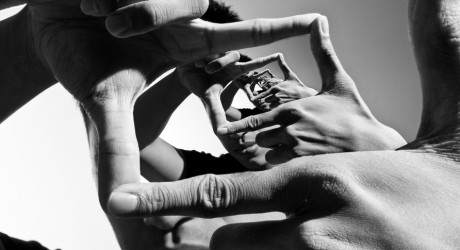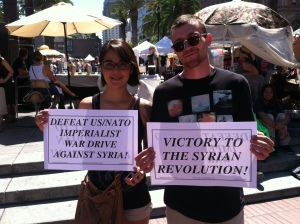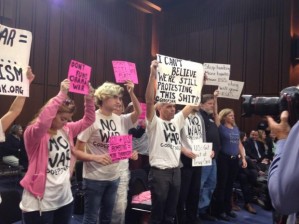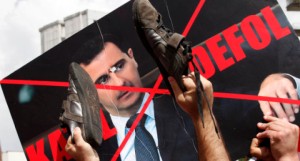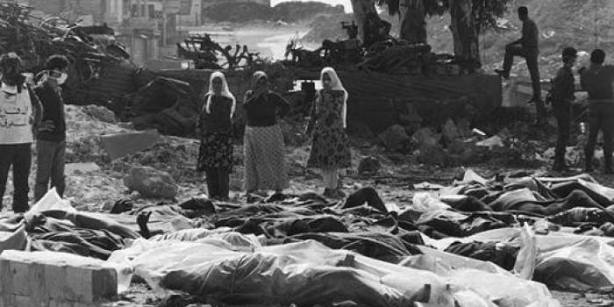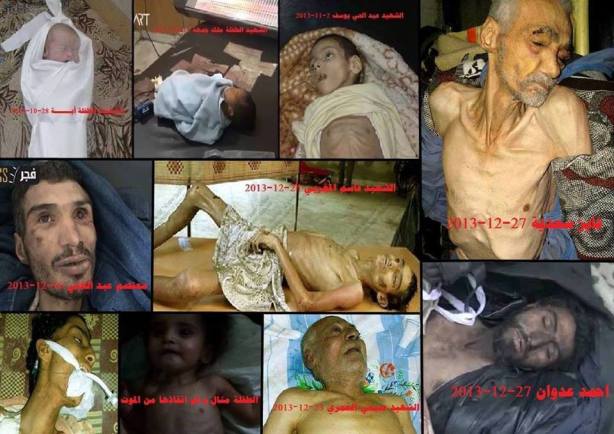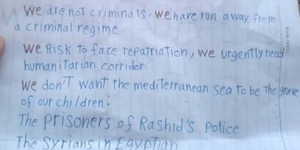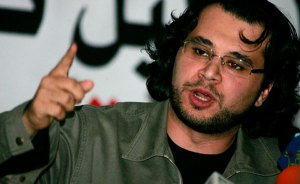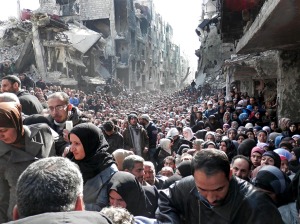BY SAMANTHA FALCIATORI
The Syrian situation is hell on earth. To understand what is happening is our human duty, as well as being indispensable for the comprehension of those phenomena that cross over the natural confines of that land. For this reason, our Magazine will always follow the Syrian war as closely as we can; a war which is in fact many different and overlapping wars, so as to provide an always up-to-date picture that is as accurate as possible.

We have interviewed a volunteer of the Red Crescent, witness of the massacre of Al-Bayda and Banyas in May 2013 in which over 400 civilians were slaughtered, house by house, to then be buried in mass graves. His is a testimony that at 4 years from the massacre tells the story of one of the darkest and most bloody pages of the Syrian war.
What you are about to read is a unique testimony of one of the bloodiest pages of the Syrian war, the massacre that began on 2 May 2013 of the civilian population of two towns in the coastal area. The National Defence Force (NDF) and the Shabeeha, pro-government militias comprised of Shi’as and Alawites (the religious group to which the Assad family belongs), attacked the Sunni-majority towns of Al-Bayda and Banyas, nestled in the Alawite-majority zone between Tartous and Latakia, stronghold of the Syrian regime, with summary slaughtering the inhabitants (Sunni), breaking into their homes, setting them on fire, burning alive those who were inside, including infants.
The Banyas Local Council has identified a total of 410 victims, the Syrian Network for Human Rights has counted 459. The UN Investigation Commission on Syria has investigated this massacre, among many similar ones, identifying the perpetrators, ascertaining that there was no presence of armed opposition, nor were there any military clashes in the city during the massacre, and concluded in its report A / HRC / 24/46 (pages 32-33) that there was “reasonable evidence that the perpetrators were governmental forces”.
It is the Syrian regime itself that has confirmed the responsibilities of its militias carrying military operations on Al-Bayda and Banyas, broadcasting images of the carnage (as in this news report from al Manar) on the government-friendly TV channels, but always claiming that only terrorists had been killed. The images of women and children, including newborns, mutilated and burned alive, as well as the testimony of the survivors, tells another story.
We were able to interview an eyewitness of that massacre, already heard by Human Rights Watch investigators for their No One’s Left investigation. The man was in Banyas and was part of the team that the Syrian security forces sent after the massacre to arrange the corpses in the mass graves and clean up the streets. He accepted, asking for anonymity for security reasons, to tell Zeppelin what happened and what he saw, providing a rare and precious testimony also about the planning of the massacre (which had been in the planning for several months) and its political / religious motives. This is the transcript of the interview.
The massacre of Al-Bayda and Banyas can be understood in the wider project of ethnic cleansing of Syria, and it fits within the framework of the efforts of international justice to take the first steps toward punishing those responsible for war crimes and crimes against humanity, thanks also to those eyewitness accounts, like this one, that, though they are brutal, should be listened to.
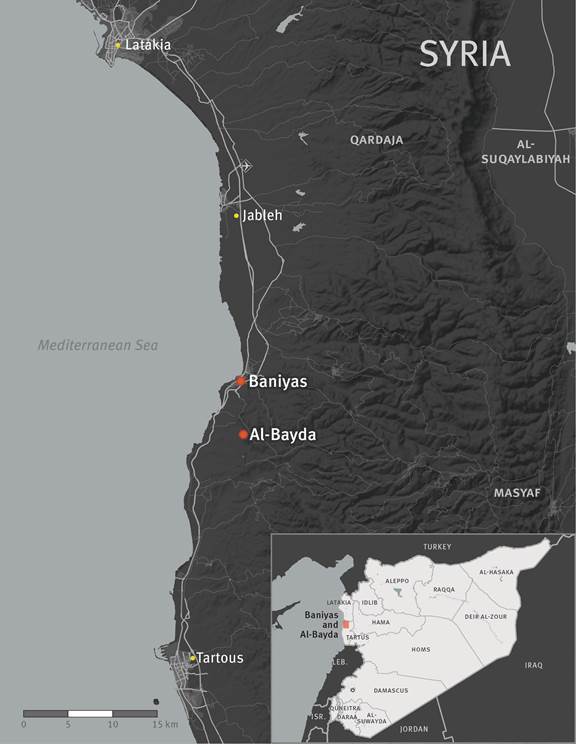
Testimony of a volunteer of the Red Crescent from Banyas.
He witnessed the 2013 massacre and disposed of the bodies in a mass grave afterwards. He requested anonymity for security reasons. The interview was recorded over Skype on January 5, 2017.
Q: What can you tell me about that day? What happened and what did you see?
[..] The Syrian Red Crescent could enter the city only 3 days after the massacre, because the army prevented all the people from coming in or out of Banyas [..] Banyas is a coastal town between Tartous and Latakia, the two biggest cities in the coastal area; Banyas is a smaller town, of about 50,000 people. It was one of the first which took part in the revolution, when people took to the street for many reasons, regarding what was happening in Deraa, the lack of freedom, but also because there were tensions between the rural areas of Banyas, mainly Alawite, and the city, mainly Sunni, and they felt the injustice because all the employees, all those working in courts, hospitals, in the oil industry of Banyas are all Alawites, and people felt injustice and took to the street. This was a choke for the regime because it thought that a coastal city, where the coastal area was the stronghold of the regime, would not participate in any kind of demonstrations. So Banyas was a surprise for the regime, they hated it, because they saw people demanding the fall of the regime in the heart of its stronghold.
Q: And the demonstrations were in the Sunni part of the city or all over the city?
In the Sunni part. In Banyas you have the Sunni part which is the old city of 50-60 years ago. Then when the Alawites took power, they came from rural areas, so all the officers, State employees settled in Banyas and built new neighbourhoods, so Banyas was getting bigger and now it is in two parts: the southern part, which is Sunni, and the northern part, which is Alawite. Christians are living in between, in the two parts. The Christians who are originally from Banyas are living with the Sunnis because that is the old city, and the new Christians who came to Banyas from other towns are living in the new neighbourhoods, the Alawite ones [..]. The demonstrations were 100% in the Sunni part. Christians, for many reasons, did not take part in them. I did, but secretly, because the regime tried to prevent Christians and Alawites from participating in the demonstrations because it did not want them to look like a national thing whose demands came from everybody[1], so it tried to emphasize their Sunni trait.
Q: So there was dissent also among the Christian and Alawite community?
Yes, they tried to prevent them from getting in because when Alawites and Christians would come to the demonstrations it looked like it was not religious or radical [as the regime wanted to depict the demonstrations] but it would be a Syrian demonstration. But still, in the first 3 or 4 demonstrations, there were Alawite people coming from the Alawite neighbourhoods secretly who participated in the demonstrations. I have videos of this, many Alawite people came, they had speeches, they were welcome and people were crazy about them because they were Alawites supporting their demands, it was great. But after that, in May 2011 the Syrian army surrounded the city, they cut electricity in the Sunni part, they cut food [deliveries] preventing it from coming in, the siege lasted for 2-3 weeks, and after that they rolled the tanks and got into the city. They took a lot of prisoners, they were tortured in the Banyas stadium, where they took the people, 10,000 maybe, tortured them and humiliated them[2]. People were taken to the military prison in Tartous, Damascus and Homs, some people were never returned. We think they were killed under torture. After this, when the army came back to the town, patrolling the city, there were a couple of people trying to make very small demonstrations, like putting some homemade bombs where government forces were coming or going, but nothing as serious as it was happening in other parts of Syria[3], I think just 2 or 3 soldiers died in all these actions. This was still 2011, early part of 2012, then in Banyas everything was back to [normal] [..].
Suddenly, in early 2013 [..] all the Alawites involved in the militias of the regime, some were my friends […] they started to say that the people of Banyas were planning for something big. I said: “What are they planning for? Come on, the demonstrations have stopped, nothing is happening anymore”, so this kind of propaganda became to spread among the Alawites […]. There is a militia, the National Defence Forces (NDF), they are mainly civilians, 100% Alawites, and they are very tough, with a very strict point of view with the regime, they want all opposition dead, they started getting arms from the government and to participate in the battles all around Syria. One of them was called Ali Shaddoud, he is very famous in Banyas, he is a pharmacist. He is the founder of the NDF in Banyas and he told me personally that something big is happening in Banyas. Frankly I did not believe him.
Q: Because the opposition was not strong in Banyas?
Yes, because in 2013 it was defeated. The government was in full control of the city, so “what will happen? Nothing”. But he told me “something very big is happening”. When I tried to understand from some friends of his, some told me that the regime was trying to focus on Damascus and the coastal area and it did not want anything to happen there, so if there are Sunnis remaining in this area they wanted them to have a lesson, so they cannot oppose the regime anymore […] Then there was no intervention by Hezbollah, Iranians or Russians, so the regime was afraid that it could not control all Syria, so it was trying to preserve Damascus and the coastal areas.
Q: They did not target the political or military opposition: they targeted the Sunnis.
Of course. From the Alawite point of view when they say “opposition” they do not mean the political meaning of the word, they cannot say “Sunni” in the street because that would be rude and sectarian, but by “opposition” they mean “the Sunnis”. And when they said “we want them to have a lesson”, they meant the Sunnis. This was clear since the early months of 2013. But it was not before the early days of May 2013 that… it happened very fast, we started to see tanks coming to the town, and it was not 100% weird, Syria was at war […] we thought maybe they are moving troops and vehicles, ok. But then they put tanks and mortars on the hill of Banyas, in the Alawite part of the town, the hill that overlooks the city. We started to see people that were not from the town, they were wearing regime uniforms but they did not sound like they came from Banays. Some people who saw them, including my brother, saw Lebanese people having dinner in a restaurant in the Alawite part of Banyas, this restaurant is famous because the NDF gather there. They were clearly Lebanese, so Hezbollah or close to Hezbollah, I do not know, and they were talking about a big operation that was coming to Banyas. There was this guy, Kayalli, the commander of a militia, he comes from Turkey, from the Alawite minority in Turkey, they are fighting for the regime and this Kayalli lived in Latakia, where he went on TV and said, literally, “Banyas is the only weak point for the government in the coastal area and we will put an end to this, the traitors can come in the coastal areas through Banyas and we need to end it”, he said this 2 or 3 days before the massacre[4].
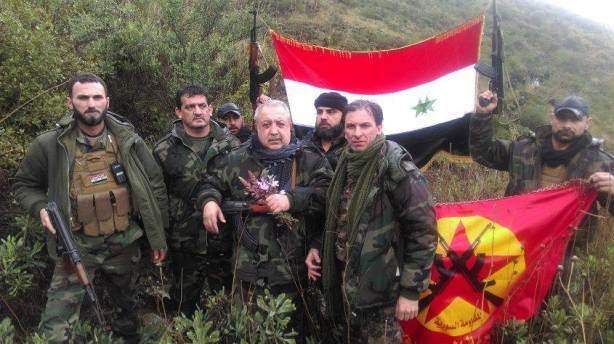
The Alawite General Ali al Kayalli, better known as Mihrac Ural (he is of Turkish origin, but has Syrian nationality) is the head of a pro-government militia, composed of Alawites and Shabeeha, called Syrian Resistance, based in al Baseet, North of Latakia. He was among those responsible for the massacre of Banyas. In this photo, he is in the centre, with flowers in his hand, together with his men. Credits to: sbs.com.au.
On the day of the massacre I was in the church because it was the Thursday before Easter[5] and suddenly […] we heard gunshots, we went out and saw the army and militia telling people to go home, so we went home. In the evening, we started to see… not from my home, but I went to the Alawite part, I saw 200-300 men coming from the highway, they were walking on the bridge that comes down to Banyas, some of them wearing masks on their faces, and also Alawite people, some of them were my friends, started to join them and I asked them “what are you going for with your guns?” They said “there is an operation in Banyas and al Baida”, al Baida is south of Banyas and it was famous in the first months of the revolution because it was actively participating in it […] so they began with al Baida, which is Sunni. Families of Banyas are living in al Baida and vice versa, so they are very close to each other. They started in al Baida and I was on the phone with a friend, and he was shaking, he was very afraid. I was surprised and asked “what is happening?”, because we thought they were going to take some men to prison, or beat and humiliate them as they did every day everywhere, but he told me “no, it is not beating nor humiliating, they are killing people”. And I was like “What? Killing people? Why?” and he said “Yes, they are killing people.” He told me that his mother’s family were burnt alive, some people were killed by gunshots, some were burnt, they gathered people in a shop and burnt them, like 60 or 70 dead bodies there, and people started to flee the city. So this is what they [regime people] wanted. It was May 2nd.
On May 3rd […] they came to Banyas and made a massacre […] in the heart of the Sunni part of the city. My home is very close to this so I went on the roof and I saw clearly the tanks bombing the city, I was able to see clearly the shells coming over my house, I saw them with the naked eye, and dropping down in the middle of the town. Then again these masked men came and did these atrocities. I did not see it, but many people told us, they started to kill people with swords, axes, guns, by burning, and I know families by name. They came and killed whole families…for example the Taha family had 17 people killed, they killed father, mother, sons, the son’s wives and sons and so on.
Q: So was it a deliberate ethnic cleansing of the Sunni population of the city?
Of course, because they targeted [Sunni] families, like the Taha family, the Shighri, even when they see “Shighri” on your ID card the government forces would be upset because they see that you are 100% from Banyas, so 100% opposition, so 100% Sunni. So they did ethnic cleansing of [Sunni] families. People started to flee, to Latakia. Also my family wanted to go there and they were accepted. I did not go there but my sister did and at the entrances of Latakia there were regime checkpoint and they were screening people from Banyas, if they knew they were Sunnis they sent them back, if they were Alawites or Christians they let them in. This lasted until May 4th, when they moved to another Sunni village […] called al Basateen, where they did not do ethnic cleansing but they took 95-96 men to prison and we have not heard of them since. So we assume they were also killed under torture. After the killing was over, it was a real shock to see even the Alawites who are 100% with the regime, being shocked and upset. A friend of mine, she was working in my same company, told me that her brother, an Alawite who supports the government, was part of these NDF and went to Al-Bayda to participate in what he thought was a regular operation of the regime, and he was shocked by the amount of atrocities done, the amount of killings, burning bodies, killing children, he fainted and they had to take him to hospital. He could not eat for two days, he was in shock, even people who are very radical with pro Assad [positions] were in shock, it was completely unprecedented, unexpected. After that they began to steal, they took a lot of cars, family homes’ furniture, we could see them putting them on army trucks. After 2-3 weeks they let people go back to Banyas, but not to Al-Bayda. Al-Baida is still empty to this day.
Q: But they didn’t let the Sunnis come back, or also the Sunnis?
Also the Sunnis. But of course after this a lot of, and by “a lot” I mean A LOT, of Sunni families in Banyas left. As my Alawite friend said, it was a lesson. So many families went to Turkey, and from there they came as refugees in Europe. […] Now in the Sunni part of the city you can only see old men, children and Sunni people coming from other towns, like Aleppo, these are the pro-regime Sunnis of Aleppo so the regime lets them stay in Banyas.
Q: When could you enter the targeted neighbourhoods as a Red Crescent volunteer?
We entered on May 7th, 8th and 9th for three consecutive days to bury the bodies, because they were in the street. I didn’t go to al Baida, because other teams were going there. Some members of the Red Crescent managed to smuggle out some photos of the dead bodies and these are the only photos we have of this massacre. They put us in a lot of trouble because they did not expect members of the Red Crescent, which is controlled by the regime, to smuggle photos out. These are the only photos because no media was allowed to go in and I know the people who took the photos and smuggled them out.
Q: There is a lot of disinformation about the photos because they don’t have a source, being smuggled out secretly. So some people say they are Christians killed by Daesh [ISIS] or Palestinians killed by the Israelis, or whatever, so…
Look, the regime is not stupid. It is evilly smart. It tried to confuse us, its supporters put together some photos of Banyas, Palestine, Iraq and said “look, this is not Banyas!” but I can know exactly which photos were taken by us and I can tell you where they were taken, I can pinpoint them on Google Maps, and some of the photos are taken in such known streets that people know it is Banyas. These photos are taken by members of the Red Crescent. [..] I have an Alawite friend, he is the one who took the photos of the children. So let’s see the photos[6].
The first one with children with a yellow shirt, another one with jeans, this is in Banyas. And this [scene of the] photo, I saw it personally, with the naked eye. I can assure you 100% that I saw this horrific scene. The second one, the two babies, I did not see this personally but it is in Banyas, and also the other one. The fourth one is in Al-Bayda, I know this street, it is not Banyas, it is Al-Bayda. The other one, with the blood, the boy and the men, also this is in Al-Bayda and I know the guy, the family of the guy. The photo with the woman and the children, this is also in Banyas, in a neighbourhood called Ras Al-Nabe’. The last photos, with another woman and children, which is by the way the same as above, this is Banyas, and I know these stairs, everybody in Banyas knows them, this small street is in Banyas, in Ras al-Nabaa. The regime ordered us to open mass graves and put people in them. We were not able to put all the families in the mass grave together, respectfully. I will not forget where it is. We put a lot of bodies in it, I think 40-50 bodies and I heard from my friends that there are also mass graves in al Baida. We managed to bury all the bodies. […] We know from the Local Councils in al Baida and Banyas that there were 300 killed in al Baida and over 100 in Banyas. So totally 410. Half of them, more or less, women and children.
Q: I wonder something: after the massacre the regime blamed terrorists…
Actually no [..] they said the government attacked Banyas because there were terrorists hiding weapons there.
Q: But how can they justify the fact that in al Baida and Banyas many women and children died because of the massacre? How could they all be “terrorists”?
I know what you mean, but if you think that the people who support the regime try to find excuses, maybe you are wrong. From my friends, my colleagues, at work, at university… more than 75% of the people who are pro-regime, like Alawites and some Christians, they do not need excuses. Actually I hear some neo-fascist-nazi things, like “kill them, they are insects, they are animals, let them be taken out”. Of course some of them say “Yeah, killing children is not ok, but this is all their parents’ fault, they want the Islamic State, they want to kill minorities, so they had the right punishment”. You can hear this [being said] without any shame, so people do not need excuses, they know, they knew that the regime killed them, but they try to defend it, they try to convince themselves that they are terrorists, and maybe a couple of mistakes have been done, but they are living well with this. You cannot imagine how much hatred there is. Mainly the minorities feel like this, really, they are like Nazis, I’m sorry to say it but…of course some of the minorities are with the revolution, they stand bravely, but I’m talking about the mainstream.
Q: Many people say that before the revolution the Syrians lived together peacefully…
No, this is a big lie, we lived in a lie. We had a secretive regime that controlled every aspect of life and society […] In my classroom, we were like 20-25 guys, and 10-11 of us did not have the father because they were imprisoned and were never seen again. People tried to forget what happened in the 80’s, the horrible Hama massacre, but the hatred is real. […] The Alawites took all the positions in the coastal areas, all State employees are Alawites and many young Sunni were forced to go abroad to work.
Q: One last question: when I was reading the Human Rights Watch report…
“No one’s left”? I was interviewed for that report[7].
Q: So maybe you remember that it says that the regime started the operation in al Baida because a man confessed there were deserters. What do you think about it?
No, I think that’s irrelevant. Banyas took part actively in the demonstrations, we hid some deserters, there was an assassination operation against a regime officer, all this happened. But I know it was deliberately planned months before, you cannot make such an operation in a city where there is no violent engagement like in Homs, Aleppo, Damascus or the rural areas. You cannot kill 400 people just to get a few deserters, the amount of forces that came to Banyas but are not from Banyas, all the talking to my Alawite friends about a lesson [to give] to the Sunnis in the coastal areas, I think it was well planned.
[…] The regime didn’t even bother to emphasise this confession as a pretext, it said “it was an operation, maybe some mistakes were done, but the rest is propaganda against us”. Since the early days there was a lot of talking about tanks, Lebanese and militia men coming to town having conversations, it was all obvious. But we were shocked by the size of it, it was huge to kill 400 in two days! […]
I think it was a deliberate ethnic cleansing. It was not part of the daily activities of the war […] We have not seen this elsewhere, in Latakia I saw a shooting on a demonstration that killed 30 people, but still that was “regular activity”. But this and the Ghouta attack are beyond the clashes between regime and opposition. It was ethnic cleansing, also in Ghouta they were 100% Sunnis and in Banyas no Alawite or Christian was injured, not killed, not even injured. [..] My friend, who took the photos of the massacre, is still having nightmares to this day, after more than three years […] Those two days changed everything, I had friends and family who are with the regime, two of my cousins tried to defend the massacre and we are not talking anymore since the massacre. So divisions are also in the families, imagine in the society. They say there were terrorists, but in that area there was not jihadist or ISIS presence, it was a stronghold of the regime […]. I remember one thing, I was talking with a guy whose uncle was a prominent Alawite officer who worked for Hafez al Assad, Ali Douba, he was very famous because he was the head of the Military Intelligence Services, and this guy told me once: “Do you know why they chose Banyas?” and I said “No, why?”. “Because they could not do it in Latakia or Tartous because they are big cities and by doing it there they would risk to paralyse the city, so they decided to punish Banyas because it is small and even if life stopped in Banyas, that would not have affected the economy”. […]
Q: Ok, thanks a lot for your time and testimony [..].
Thank you. I don’t want this story to die, I want people to know. It’s very important what you and others are doing.
Source: http://www.thezeppelin.org/al-baida-e-banyas-massacro/
[1] Regardless of ethnicity or religion, as the demonstrations actually were.
[2]This episode is well documented. See Amnesty International, Syrian student tells of torture ordeal in mass stadium detention, 24/05/2011.
[3]For an overview of the story of Banyas from the early demonstrations to the massacre and the development of local councils and brigades, see S. DARWISH, M. DIBO, Cities in Revolution. Baniyas. Al-Bayda: The White City, 24/05/2011.
[4]Video online: https://youtu.be/y0P4rhRjR9I.
[5]The Orthodox Easter was on May 5th in 2013, the massacre started on Good Thursday, May 2nd.
[6]Yallasouriya, The Baniyas Massacre: Why Assad Did It, 6/05/2013. Online: https://goo.gl/km1NY9 In this link videos of the aftermath of the massacre can also be viewed.
[7]“No One’s Left”. Summary Executions by Syrian Forces in al-Bayda and Baniyas, ibid.
Interview by Samantha Falciatori. Introductory text by Samantha Falciatori, translated by Mary Rizzo
